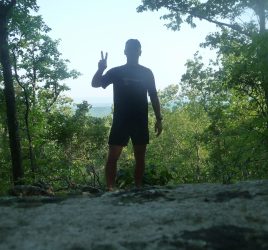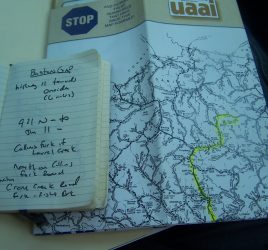A Needle in a Haystack
“If you do it will be, in the writer’s opinion, almost a copy of the German jaeger rifle because these Bakers were making guns from 1717-1754 — the earliest gunsmiths I have found in this area of Pennsylvania.” — Sam Dyke, 1972. “The Baker Family of Gunsmiths in Lancaster, County 1717-1754
The problem with history is that it doesn’t always line up exactly how you’d like to tell a story.
For most of my life, I’ve heard little bits and pieces of stories about the Bakers of Clay County. I knew my family came from Kentucky, and I knew there had been some bad blood. It wasn’t until I was 30 that I found out exactly what that meant.
The more I dug into the Baker’s history, though, the further I got from the center of what my family knew. And the more we moved away from that center, the more the stories got less credible.
When I came to Lancaster, PA, I hoped to fill in some of those blanks. What I knew was that we were gunsmiths, and we had been instrumental in the early construction of what would become the Kentucky Long Rifle.
Unfortunately, the Bakers arrived here a decade before the county was even formed, and by the time the gunsmiths were going full blast, we were gone. It’s unclear what role we had in the development of the Rifle, although it’s clear we were here and working with the gunsmiths who have received credit for its “invention.”
What that meant was that our family’s history here was largely lost to time. Any major connections I hoped to make were gone.
But only mostly gone.
What we do know what recovered by Samuel Dyke, a writer and researcher who did work for the Kentucky Rifle Association. There is enough to establish that our family came through Lancaster, set up a gunsmith operation, and stayed until 1741, and all of those records are stored throughout the Lancaster History Society’s archives.
What I did find in the haystack:
- I had the opportunity to hold Caleb Baker’s deed to 500 acres of land on Pequea Creek, about a mile north of the Susquehanna River.
- His father Robert has purchased that land from Col. John French in 1717, and a bit later Robert’s brother Samuel bought two tracts of land just south of his, which gave the Bakers full run of Pequea Creek and the Susquehanna River.
- I have a map of Martic Township, which would become part of Lancaster County in 1729, that designates the Baker land its gunsmith shop.
- I have another map that locates the important gunsmith sections of Martic Township pre-Lancaster founding.
- I have proof that the Bakers had the first recognized gunsmith shop in this area, and that the first iron forge was found on their land.
- There is a great deal of historical speculation that our family sold guns to American Indians, and that we were involved in frontier trading, which makes sense considering the family’s move to North Carolina in the mid-1700s and its subsequent long hunting experiences.
So today my story took a turn. It moves from the grandiose tale that I’d hoped to find when I came here, and turned into something smaller and more intimate. Years ago this would have concerned me. Today, it means I am on the right track.
Another good sign: the historians I spoke with brought up — unprompted — the themes I’m going to explore in the book, i.e. guns, government, poverty, as defining elements of life here in the early 1700s.



